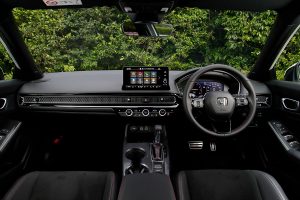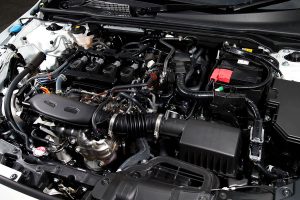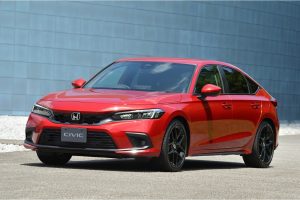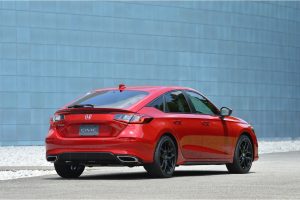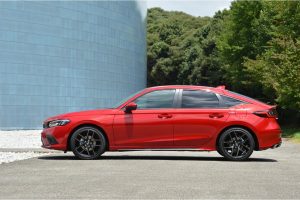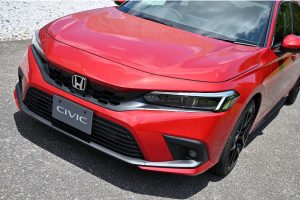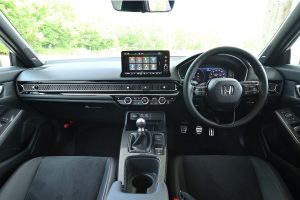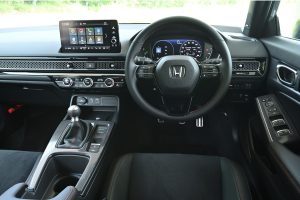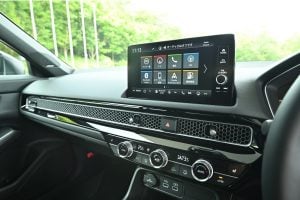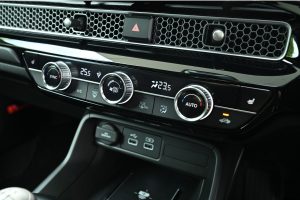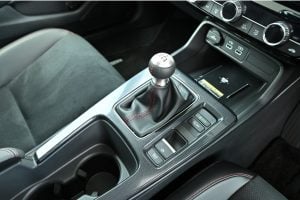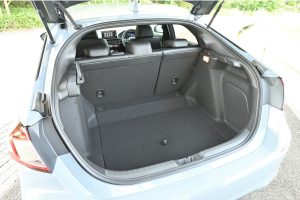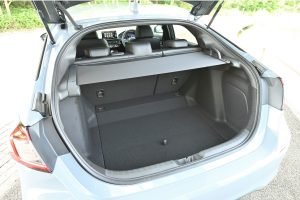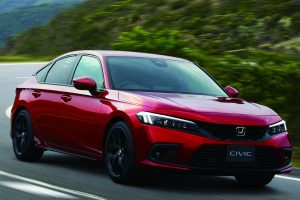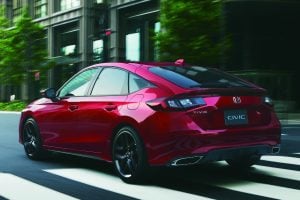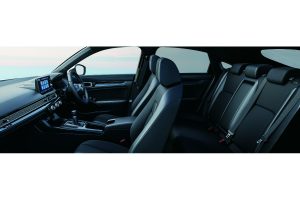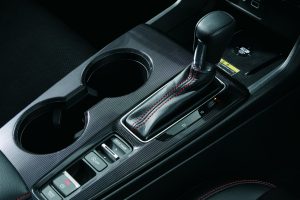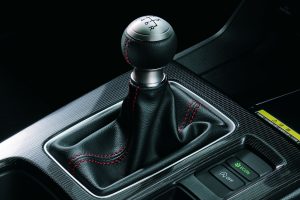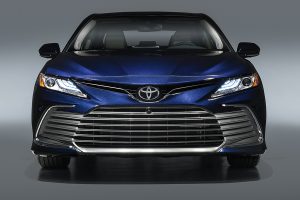Redefining the car “Civic”
Under the hood houses a 1.5-liter inline-4 VTEC turbo engine, which some would think it’s the same as the previous model. Well, no. Newly-made improvements include a high-efficiency turbocharger with low-pressure loss piping, newer cylinder heads, lower friction, and a high-rigid crankshaft.
When you drive it you immediately feel the difference from the previous generation, asking yourself, “Is it really the same engine?”
Of course, the previous Civic was also powerful, but the turbo setting was too powerful that it lacked smoothness. So how does the new model handle that problem? Just when you start stepping on the gas, you can feel the engine accelerate and turbocharge very smoothly and directly. Even when you accelerate to a higher RPM range, its power lasts perfectly, which makes the refined engine easier to handle.
In addition, the engine has been balanced out to become a smoother engine when compared to the previous model, which was also energetic but somewhat rough. Honda has declared its electrical shift as an automobile company, but we can still see what Honda wants to do with its area of strength.
Buyers can select from either a 6-speed manual or a CVT. Surprisingly in the age of automatics, manual shift models accounted for 30% of total sales for the previous generation. That fact made Honda retain manual models for the new generation.
When compared to the older models, shift feels are improved, strokes are shortened to enable more precise operation with a lighter touch. Moreover, gear ratios have been widened to adapt with the refined engine, making it easier to take advantage of its strength by reducing busy shift works to improve drivability.
For CVT models, the transmission itself has been improved with Honda’s G-Design Shift technology. This technology allows the transmission to optimize with the engine RPM, allowing quieter acceleration unlike a typical CVT revving excessively to do the same thing.
The car has another notable feature that is useful when downshifting. When the driver brakes at situations like downhills, the car detects deceleration g-force, automatically downshifting without the need of controlling paddle shifters. Smooth driving at tight corners is achieved by holding the RPM, which means there’s no jerkiness when re-accelerating.
The chassis is actually an improved version of the platform used in the previous generation, but changes have been made just like the engine. For numbers, the wheelbase is now 1.38 inches longer and the rear tread is 0.47 inches wider. Other changes include the use of an aluminum subframe, friction reduction in various parts, and capacity expansion for the rear control arm bushings.
As for the body, a front/rear ring structure, a lattice-shaped frame layout, the use of aluminum and high-tensile materials, and the optimal distribution of structural adhesives (9.5 times more than the previous gen.) have all contributed to an 18% increase in torsional rigidity.
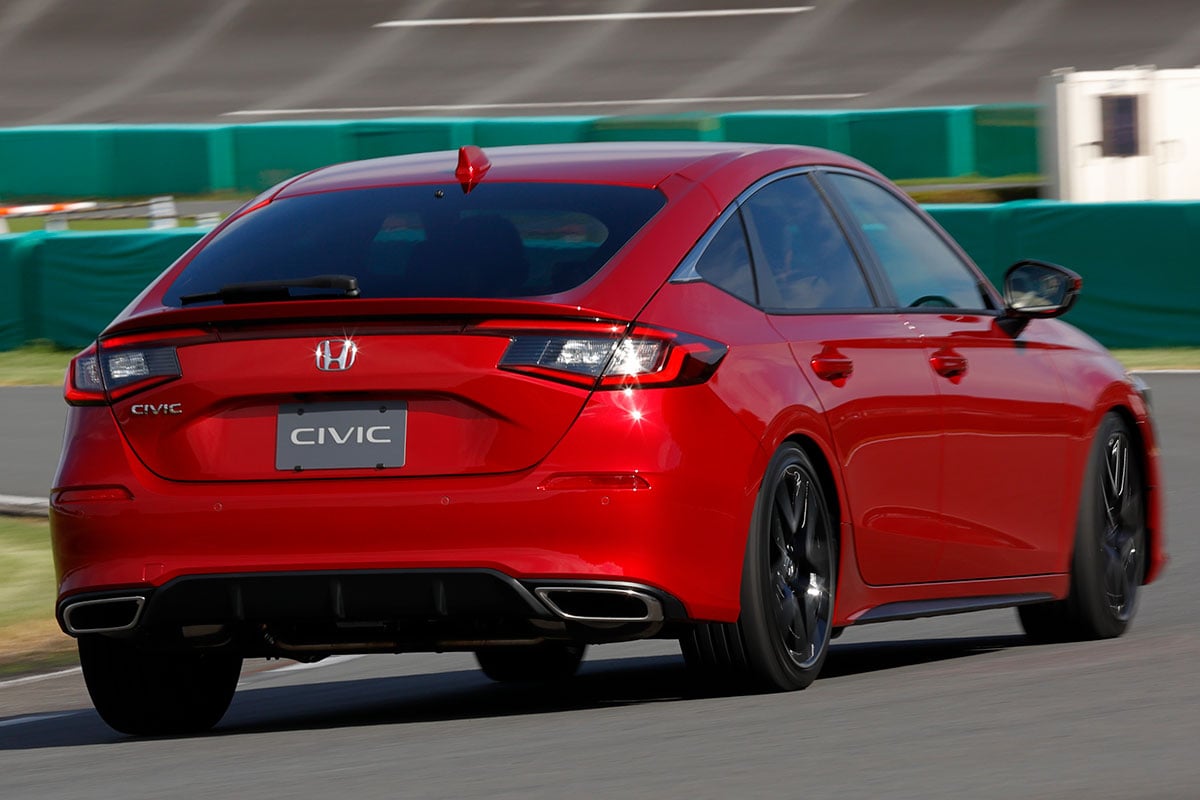
How does the car drive? The previous model had a sporty hatch-like feel with its nimble and sharp movement, but it was also a bit rough around the edges for a high-end hatch. In the new model, these areas have been mostly improved.
Specifically, the quick response when turning even with a small steering angle, a good handling balance distributes the load perfectly at corners and allows all wheels to be used effectively, supple footwork that grasps the road surface while minimizing unnecessary changes in the body posture, and a sense of assurance that comes from great rear contact. All these little elements perfected the Civic of the next generation.
The car’s straight-line stability is comparable to that of an Accord, and its stability is so strong that you forget that it is a Civic, is not affected by external disturbances.
The new model adopts the new generation of Honda Sensing, which is a horizontal development of the Honda Sensing Elite technology that achieved the world’s first Level 3 autonomous driving. The high accuracy of the Lane Keeping Assist System in the new model is largely due to the high basic performance in addition to the evolution of the system.
Some people may feel a harder ride than the previous model, but the synergistic effects of the flatness of the spring that prevents blurring of the line of sight, the high shock absorption and natural fit, and the comfort and postural stability of the “body stabilizing seats” that use a new generation seat frame have rather improved comfort.
Quietness is also a key point of the new model, and it is typical of Honda’s attention to detail that the necessary sounds, such as the engine sound, are suppressed rather than simply lowered in volume.
The Sport Touring trim is equipped with a BOSE audio system, which has a simple configuration, but its expansive sound field is as good as the high-end models.
These improvements are not the result of jumping tools, but rather the maturation of each part of the car, and can be said to be an overall improvement rather than any one part is outstanding. If I were to use an analogy, it might be similar to the evolution from the Golf V to the Golf VI.
But what’s interesting is that it’s not just an improvement in performance, it’s also more “Civic-like” than its predecessor. What is it? The hint was found in its basic concept. Its concept is all about being refreshing, and since it is difficult to measure with numbers, it needs to be refined through human senses.
In other words, the emphasis was placed on sensory performance rather than absolute performance, and I believe this led to a more driver-centered approach than ever. Being “Civic-like” is not about body size, vehicle weight, or engine performance, but about being close to people.
Like its predecessor, the new Civic is a global model and mainly focuses on overseas markets, but one thing that is different from its predecessor is how the car is being treated in Japan.
There is multiple evidence to support this. The fact that this is the first hatchback to be produced in Japan since the seventh model, the fact that two grades are available, and the fact that there was almost no time lag from announcement to launch, especially when you remember the previous model took 2 years to be launched in Japan. These factors are from the strong desire of the engineers wanting to sell the new car well in its home market, rather than just launching the car without thinking.
Prices for the Civic starts from $21,900 for the sedan and $22,900 for the hatchback in the United States. On the other hand, Honda only brought the latter model to Japan, starting from ¥3,190,000 (approx. $28,000). This price is a bit expensive when compared to its rivals, but we’ll soon see how pricing affects the sales.
Personally, aside from the EX, I think the lower LX trim could have been a little simpler in terms of equipment and more strategically priced, like under ¥3,000,000 (approx. $26,300).
Let’s come to a conclusion: the hardware itself hasn’t changed much, but the way of thinking has changed a lot. In that sense, it’s been a while since I’ve had a Civic that felt like a Civic. In that sense, I think that we’re in a good time to redefine the Civic. Next year will mark the 50th anniversary of the model and I hope we Japanese will once again be able to nurture the Civic for the next 50 years.




